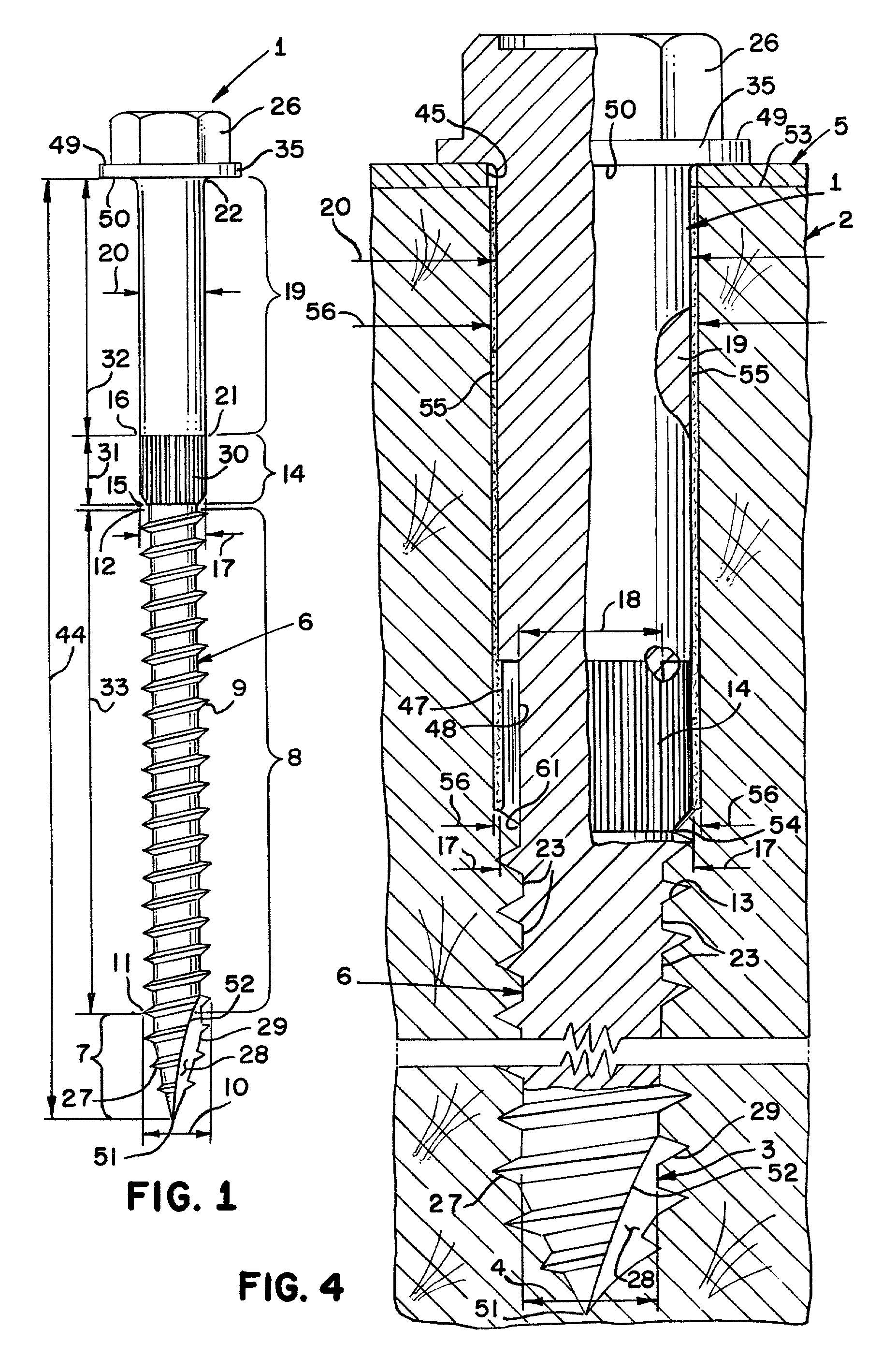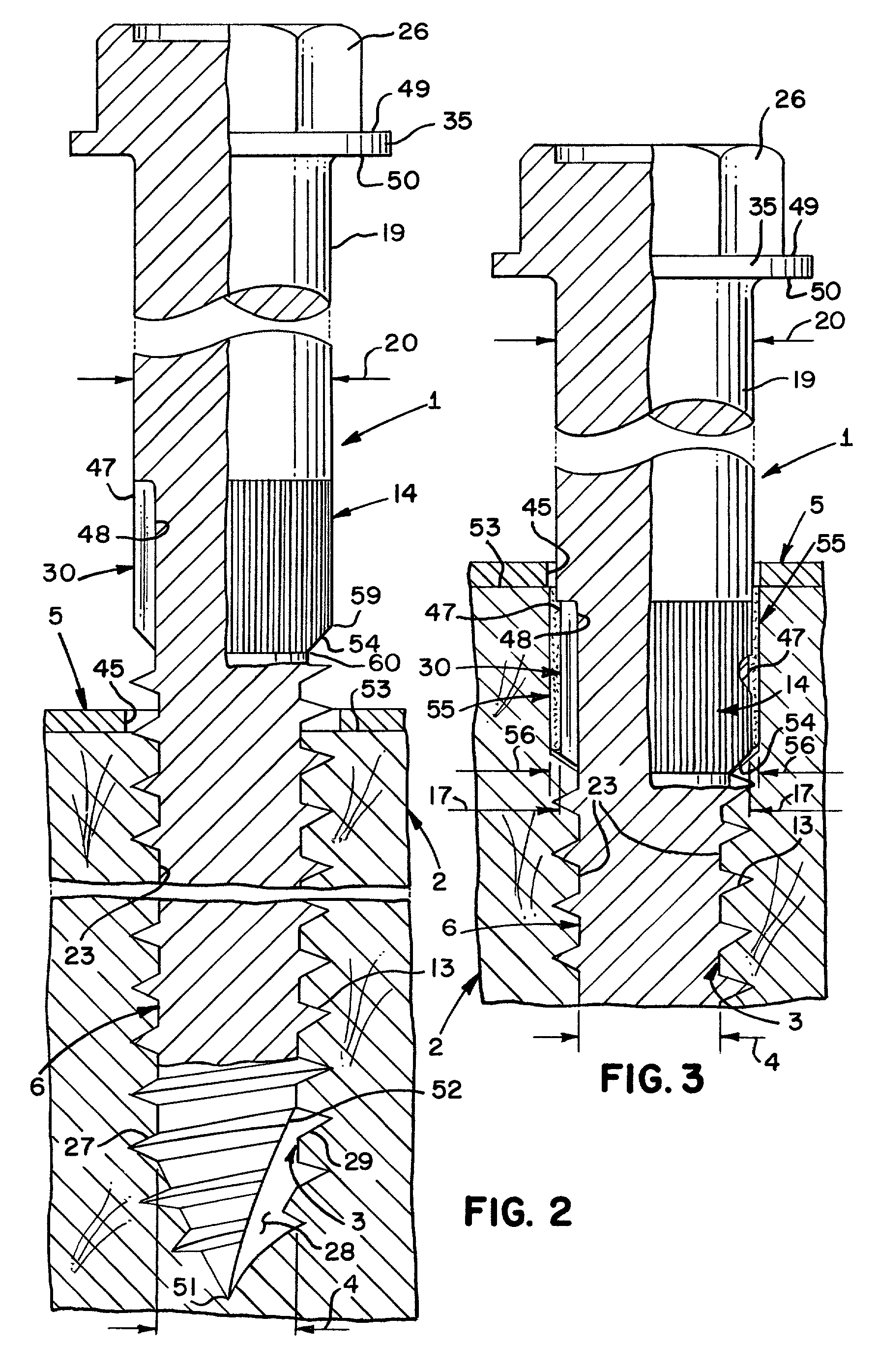Screw fastener in multiple floor truss and wood-to-wood shear connection
a screw and multiple floor technology, applied in the direction of screws, threaded fasteners, girders, etc., can solve the problems of long installation time, high labor intensity, and inability to accommodate the many nails that are required, so as to improve the load transfer rate, and install a few screws much faster
- Summary
- Abstract
- Description
- Claims
- Application Information
AI Technical Summary
Benefits of technology
Problems solved by technology
Method used
Image
Examples
Embodiment Construction
[0038]Referring to the drawings, and in particular FIGS. 1 and 6, the wood screw 1 of the present invention is adapted to hold a wood structural member 2 formed with a first bore 3 to a sheet metal member 5 or a first wood member 101 to a second wood member 102 in shear.
[0039]While the wood screw 1 of the present invention has excellent pull out value, the design is primarily directed to resisting shear forces. Three examples of environments in which the wood screw of the present invention is subject to shear forces are illustrated in the drawings.
[0040]Referring to FIG. 5, wood screw 1 connects a retrofit holdown device 36 to a wood sill member 37 resting on concrete foundation 38. Wood screw 1 is inserted through opening 45′ in sheet metal member 5′. A bolt 39 connects the retrofit holdown device 36 to foundation 38. Arrow 40 represents an upward force exerted on wood sill member 37 which may occur during either an earthquake or a high wind force such as a hurricane. Such an upwar...
PUM
| Property | Measurement | Unit |
|---|---|---|
| Length | aaaaa | aaaaa |
| Diameter | aaaaa | aaaaa |
Abstract
Description
Claims
Application Information
 Login to View More
Login to View More - R&D
- Intellectual Property
- Life Sciences
- Materials
- Tech Scout
- Unparalleled Data Quality
- Higher Quality Content
- 60% Fewer Hallucinations
Browse by: Latest US Patents, China's latest patents, Technical Efficacy Thesaurus, Application Domain, Technology Topic, Popular Technical Reports.
© 2025 PatSnap. All rights reserved.Legal|Privacy policy|Modern Slavery Act Transparency Statement|Sitemap|About US| Contact US: help@patsnap.com



